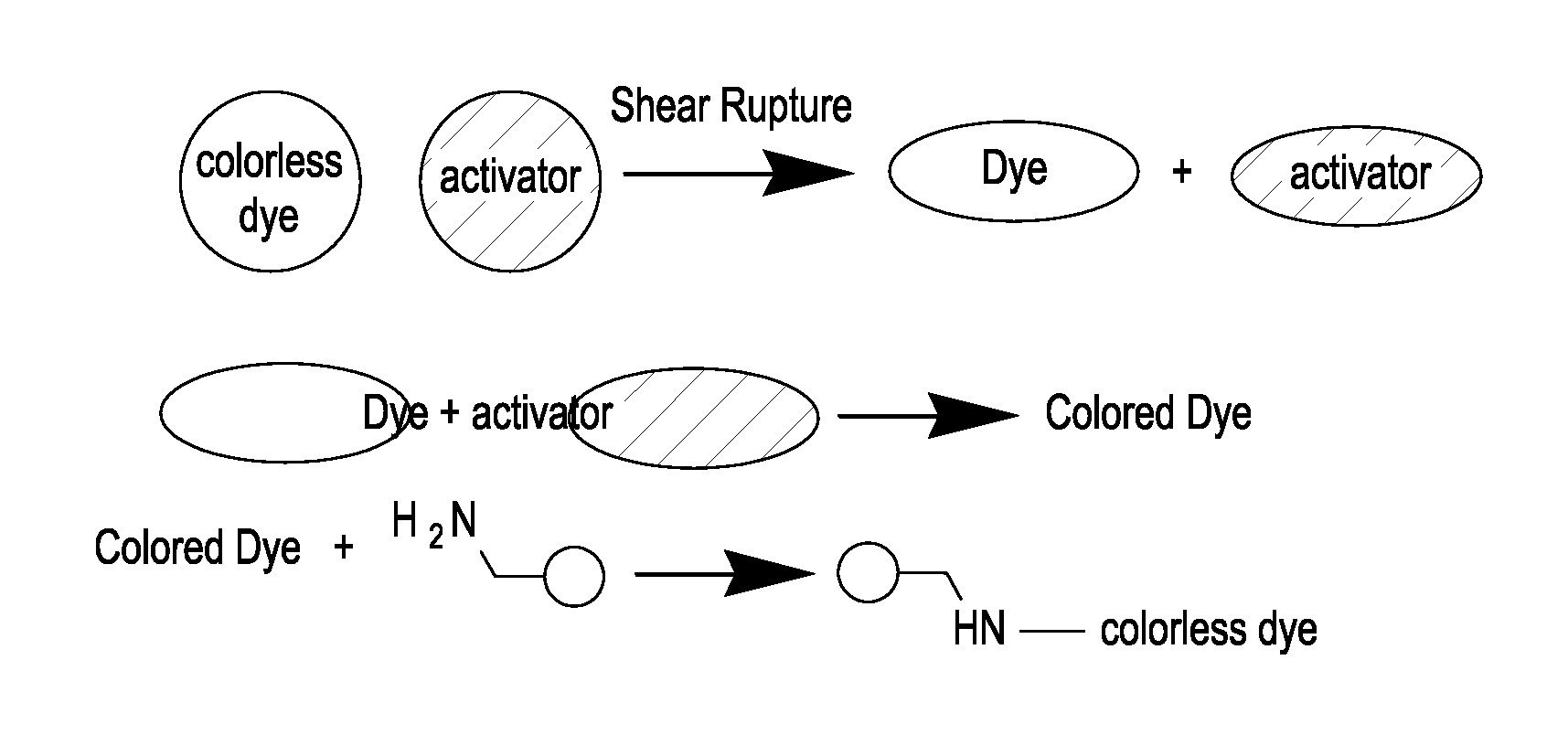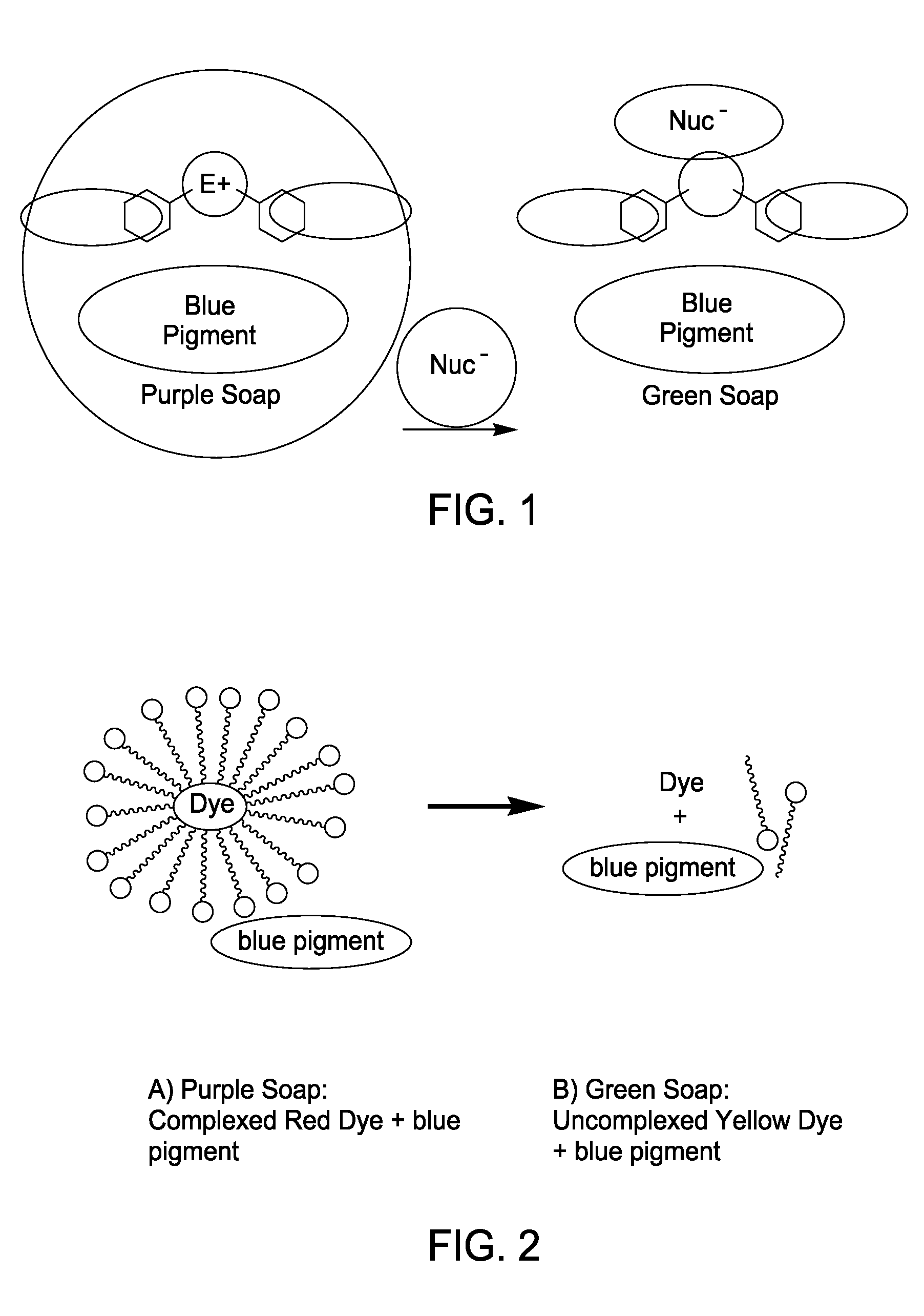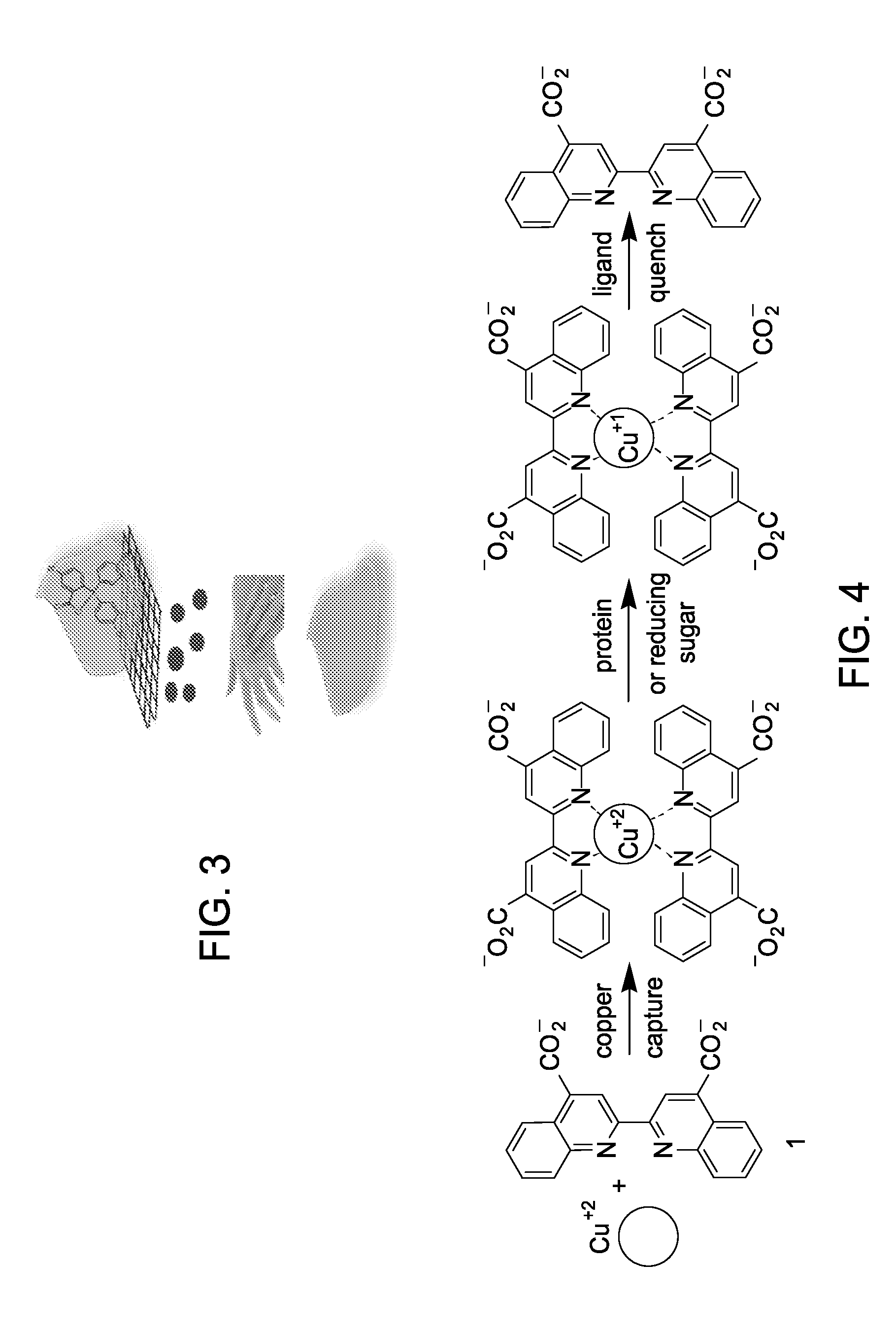Color Changing and Coverage Indicating Hand Sanitizer
a technology of hand sanitizer and color change, applied in the field of hand sanitizer, can solve the problems of limited calorimetric system, low sensitivity, slow response time, etc., and achieve the effects of high affinity for cognate bingeing agent, and safe and mild skin dy
- Summary
- Abstract
- Description
- Claims
- Application Information
AI Technical Summary
Benefits of technology
Problems solved by technology
Method used
Image
Examples
example 1
Encapsulated Nucleophilic Dye Quenching Color Scavenger
[0031]This example uses the following materials with the following attributes: The following product technical requirements listed below were taken into consideration in the generation of this proposal:[0032]Function and be stable in pH range of 4.0-7.5.[0033]Provide a color change after ˜20 seconds of hand washing.[0034]Not stain skin, hair or clothing.[0035]Be environmentally benign.[0036]Deliver bright or pastel colors.[0037]Desired rheology would be compatible with liquid base formulation that is passed through a foam creating screen during dispensing.[0038]Be safe and mild for skin and eye contact (fulfill global regulatory requirements for cosmetic ingredients).
[0039]A pleasantly colored, electrophilic dye [E+] would provide the platform through which a color change would occur via the shear process of rubbing the hands over each other.
[0040]The key step to bring about the change would rely upon the interaction of an encap...
example 2
Self-Assembling Surfactant Dye
[0044]This example uses the following materials with the following attributes:
[0045]Amphiphilic dyes designed to self-assemble would be colored purple until disrupted. The supramolecular assembly controls the mechanism through which the color change occurs. Once the assembly is disrupted, a visual color change is detected.
[0046]These microcapsules, self assembled by the electronic and hydrophobic properties of the dye and surfactant, provide a novel method to manipulate dye colors while including ingredients compatible with existing formulations. (Note: These microcapsules are not an encapsulation technology).
[0047]When complexed within the self-assembled microcapsule, the dye would appear purple and then began a change to green as the consumer starts rubbing their hands together. Once the color was completely green, it would be time to rinse the soap.
[0048]If the desirable colors could not be achieved with the soap-dye complex alone, a secondary pigmen...
example 3
Color Change Triggered Through Foaming
[0050]This example uses the following materials with the following attributes:
[0051]A Surfactant Leuco Dye would change color upon foaming. Leuco dyes are colorless in their insoluble form and color returns upon, e.g., oxidation. These custom leuco dyes (characterized by colorless to color changes and visa versa) are tuned to change color with pressure. The change in pressure resulting from foaming would result in a color change. Should the native color change be the wrong hue, a secondary pigment would be added to ensure the desired hue is achieved.
[0052]The Leuco Dye possesses an intramolecular lactone that opens then closes in response to pressure changes. Once forced through the foaming screen, the dye responds by ring opening, resulting in a highly colored zwitterionic salt complex. As the consumer massages the colored soap over the hands, the bubbles in the foam begin rupturing resulting in a color change.
[0053]Coverage Indicating Hand San...
PUM
 Login to View More
Login to View More Abstract
Description
Claims
Application Information
 Login to View More
Login to View More - R&D
- Intellectual Property
- Life Sciences
- Materials
- Tech Scout
- Unparalleled Data Quality
- Higher Quality Content
- 60% Fewer Hallucinations
Browse by: Latest US Patents, China's latest patents, Technical Efficacy Thesaurus, Application Domain, Technology Topic, Popular Technical Reports.
© 2025 PatSnap. All rights reserved.Legal|Privacy policy|Modern Slavery Act Transparency Statement|Sitemap|About US| Contact US: help@patsnap.com



